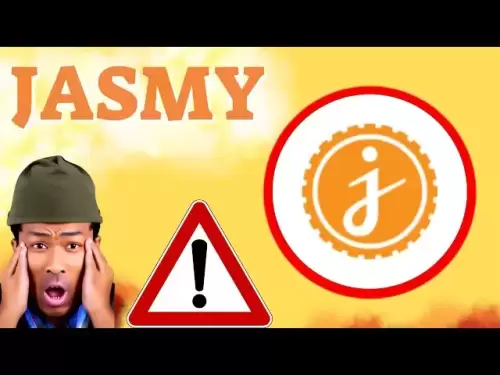-
 Bitcoin
Bitcoin $118,698.3676
0.16% -
 Ethereum
Ethereum $3,428.4877
5.97% -
 XRP
XRP $3.2496
9.52% -
 Tether USDt
Tether USDt $1.0002
0.00% -
 BNB
BNB $725.6930
4.36% -
 Solana
Solana $174.8923
4.52% -
 USDC
USDC $0.9997
-0.02% -
 Dogecoin
Dogecoin $0.2139
6.02% -
 TRON
TRON $0.3155
4.62% -
 Cardano
Cardano $0.8045
7.12% -
 Hyperliquid
Hyperliquid $46.6582
-1.72% -
 Stellar
Stellar $0.4676
0.80% -
 Sui
Sui $4.0143
0.38% -
 Chainlink
Chainlink $17.1546
2.97% -
 Hedera
Hedera $0.2458
3.27% -
 Bitcoin Cash
Bitcoin Cash $496.5967
-0.06% -
 Avalanche
Avalanche $22.8813
3.13% -
 Shiba Inu
Shiba Inu $0.0...01439
3.42% -
 UNUS SED LEO
UNUS SED LEO $8.8389
0.42% -
 Toncoin
Toncoin $3.2113
2.82% -
 Litecoin
Litecoin $101.2646
4.24% -
 Polkadot
Polkadot $4.2262
2.32% -
 Monero
Monero $340.4295
2.92% -
 Pepe
Pepe $0.0...01365
2.92% -
 Uniswap
Uniswap $8.9702
-2.78% -
 Bitget Token
Bitget Token $4.7675
2.00% -
 Dai
Dai $0.9998
-0.02% -
 Ethena USDe
Ethena USDe $1.0003
-0.04% -
 Aave
Aave $324.6394
-2.11% -
 Bittensor
Bittensor $433.6051
-0.88%
What is the difference between graphics card mining and ASIC mining?
GPUs offer versatility for mining various cryptocurrencies but are less efficient than ASICs, which excel at specific algorithms but lack adaptability and have high upfront costs.
Mar 02, 2025 at 12:42 am
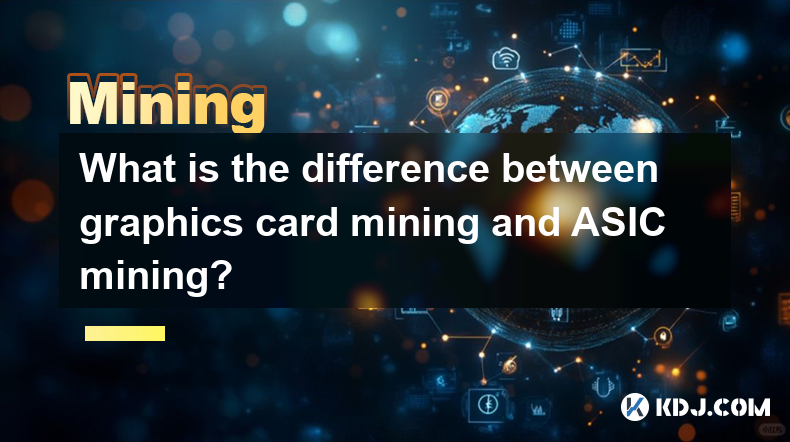
Key Points:
- Different Hardware: Graphics cards (GPUs) are general-purpose processors, while ASICs (Application-Specific Integrated Circuits) are designed solely for cryptocurrency mining.
- Mining Algorithms: GPUs can mine a wider variety of cryptocurrencies, while ASICs are typically limited to specific algorithms like SHA-256 (Bitcoin) or Scrypt (Litecoin).
- Efficiency and Power Consumption: ASICs are significantly more energy-efficient and powerful for their target algorithm than GPUs.
- Cost and Scalability: ASICs have higher upfront costs but offer greater potential for profitability at scale.
- Accessibility and Availability: GPUs are readily available, while ASICs can be harder to obtain and often require pre-orders.
- Future-Proofing: GPU mining offers more flexibility in adapting to algorithm changes, while ASICs can become obsolete quickly.
What is the difference between graphics card mining and ASIC mining?
The core difference lies in the specialized hardware used. Graphics card mining leverages the parallel processing capabilities of GPUs, originally designed for rendering graphics. ASIC mining, on the other hand, utilizes ASICs—chips specifically engineered for a single, computationally intensive task: cryptocurrency mining. This fundamental distinction leads to significant variations in efficiency, cost, and applicability.
Hardware Differences:
GPUs are versatile components found in gaming PCs and workstations. Their architecture allows them to handle multiple calculations simultaneously, making them suitable, albeit less efficient, for mining. ASICs, however, are highly specialized. Their design is optimized for a specific cryptographic hashing algorithm, maximizing their mining performance for that particular cryptocurrency.
Algorithm Compatibility:
GPUs possess the flexibility to mine a range of cryptocurrencies employing different algorithms. This adaptability makes them a more versatile option for miners willing to switch between coins depending on profitability. ASICs, however, are typically designed for a single algorithm. For example, an ASIC designed for SHA-256 is only effective at mining Bitcoin and other SHA-256 based cryptocurrencies. Trying to use it for a different algorithm would yield negligible results.
Efficiency and Power Consumption:
ASICs are dramatically more efficient than GPUs for their target algorithm. They achieve significantly higher hash rates (calculations per second) while consuming considerably less power. This translates to lower electricity costs and potentially higher profitability per unit of energy consumed. GPUs, while adaptable, are inherently less efficient at mining compared to ASICs designed for the same algorithm.
Cost and Scalability:
The initial investment for ASIC mining is typically much higher than for GPU mining. ASICs are expensive to manufacture and purchase. However, their superior efficiency can lead to higher profits, especially at scale. Larger mining operations often favor ASICs due to their increased profitability when operating numerous units. GPU mining, while cheaper to start, faces diminishing returns when scaling up due to power consumption and cooling limitations.
Accessibility and Availability:
GPUs are widely available from various retailers. Obtaining ASICs, however, can be more challenging. Many ASIC manufacturers require pre-orders, and the availability of specific models can fluctuate based on demand and production capacity. This can lead to longer waiting times and potentially higher prices compared to readily available GPUs.
Future-Proofing:
The cryptocurrency landscape is constantly evolving. New algorithms and consensus mechanisms are frequently introduced. GPUs, due to their general-purpose nature, offer greater flexibility to adapt to these changes. Miners can switch to different algorithms and coins, mitigating the risk of obsolescence. ASICs, however, are significantly more vulnerable to becoming obsolete if the algorithm they target is replaced or loses popularity. Investing in ASICs carries a higher risk of stranded capital if the targeted cryptocurrency declines or a better algorithm emerges.
Software and Setup:
Both GPU and ASIC mining require specific software and configurations. GPU mining often involves using mining pools and software like NiceHash or other mining clients. ASICs typically come with their own firmware and management software. The setup process for ASICs can sometimes be more complex, requiring specific configurations and potentially more technical expertise.
Cooling and Maintenance:
Both GPU and ASIC mining generate significant heat. Effective cooling is crucial for maintaining optimal performance and preventing hardware damage. ASICs, generally, produce even more heat than GPUs, and their cooling solutions often require specialized hardware. Regular maintenance is necessary for both types of mining, including dust removal and monitoring hardware temperatures.
Profitability and ROI:
The profitability of both GPU and ASIC mining is highly dependent on several factors including the cryptocurrency's price, difficulty, electricity costs, and the hash rate of the hardware. While ASICs may have a higher potential ROI due to greater efficiency, the higher initial investment cost needs to be considered. GPU mining, while less profitable per unit, offers a lower barrier to entry and greater flexibility to adapt to market changes.
Common Questions:
Q: Which is more profitable, GPU mining or ASIC mining?
A: The profitability depends on numerous factors, including the specific cryptocurrency, electricity costs, hardware costs, and the current mining difficulty. ASICs generally offer higher profitability per unit of hardware due to their superior efficiency, but their high initial cost needs to be factored in. GPUs offer lower upfront costs but lower profitability per unit.
Q: Can I use the same GPU for gaming and mining?
A: Yes, but it's not ideal. Mining puts significant stress on GPUs, potentially shortening their lifespan and impacting gaming performance. Dedicated mining rigs are generally preferred for optimal results and hardware longevity.
Q: Are ASICs worth the investment?
A: This depends on your risk tolerance and financial resources. ASICs offer high potential returns but carry a higher risk of obsolescence if the targeted cryptocurrency or algorithm changes. The high upfront cost is a significant consideration.
Q: What are some examples of cryptocurrencies mineable with GPUs and ASICs?
A: GPUs can mine a wide variety of cryptocurrencies, including Ethereum (although this is changing with the move to Proof-of-Stake), Ravencoin, and others. ASICs are often specialized for Bitcoin (SHA-256), Litecoin (Scrypt), and other coins with specific algorithms.
Q: What about the environmental impact?
A: Both GPU and ASIC mining consume significant amounts of energy. The environmental impact is a concern, and the efficiency of the hardware plays a critical role in minimizing this impact. ASICs are generally more energy-efficient per unit of hash rate than GPUs.
Disclaimer:info@kdj.com
The information provided is not trading advice. kdj.com does not assume any responsibility for any investments made based on the information provided in this article. Cryptocurrencies are highly volatile and it is highly recommended that you invest with caution after thorough research!
If you believe that the content used on this website infringes your copyright, please contact us immediately (info@kdj.com) and we will delete it promptly.
- Maharashtra Government Nurses Launch Indefinite Strike: A Healthcare Crisis?
- 2025-07-18 04:30:13
- Hilbert Group, Syntetika, and Tokenization: Bridging DeFi and Institutional Finance
- 2025-07-18 05:30:12
- Crypto Regulation in the US House: Decoding the CLARITY Act and What It Means for You
- 2025-07-18 04:30:13
- Superman Soars on Coins and Medals: A Collector's Guide to Comic Art Treasures
- 2025-07-18 05:30:12
- Bitcoin Whale Wallets in Motion: What's the Buzz?
- 2025-07-18 05:35:13
- Pepeto, Dogecoin, Popcat: Meme Coin Mania in 2025!
- 2025-07-18 05:50:12
Related knowledge
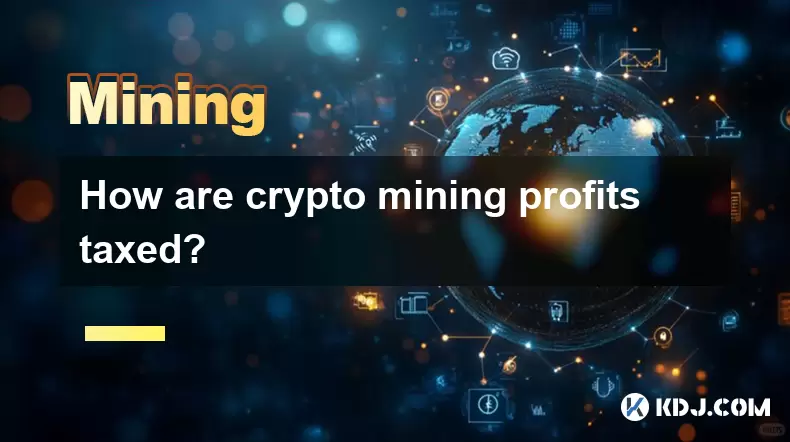
How are crypto mining profits taxed?
Jul 14,2025 at 12:28am
Understanding Cryptocurrency Mining and TaxationCryptocurrency mining involves validating transactions on a blockchain network and earning rewards in ...
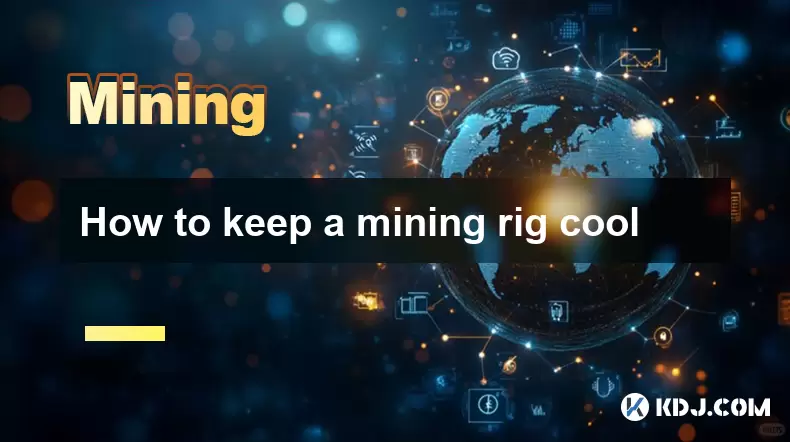
How to keep a mining rig cool
Jul 12,2025 at 01:42pm
Understanding the Importance of Cooling in Mining RigsCryptocurrency mining is an intensive process that places heavy demand on hardware components, p...

How to mine crypto on a gaming PC
Jul 16,2025 at 12:00pm
What is Crypto Mining on a Gaming PC?Crypto mining involves using your computer's processing power to validate transactions on a blockchain network. A...

How to set up a crypto miner
Jul 16,2025 at 09:14am
Understanding Ethereum Gas Fees: What Are They and How Do They Work?Ethereum gas fees are a fundamental aspect of the network, representing the cost r...
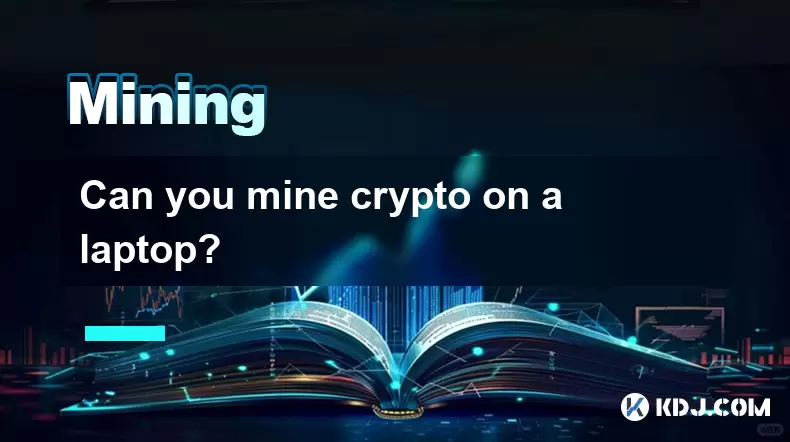
Can you mine crypto on a laptop?
Jul 16,2025 at 02:21am
Is It Feasible to Mine Cryptocurrency on a Laptop?Mining cryptocurrency on a laptop is technically possible, but feasibility depends heavily on the ha...

Is crypto mining worth it?
Jul 16,2025 at 01:21am
Understanding the Basics of Crypto MiningCrypto mining refers to the process of validating transactions on a blockchain network by solving complex mat...

How are crypto mining profits taxed?
Jul 14,2025 at 12:28am
Understanding Cryptocurrency Mining and TaxationCryptocurrency mining involves validating transactions on a blockchain network and earning rewards in ...

How to keep a mining rig cool
Jul 12,2025 at 01:42pm
Understanding the Importance of Cooling in Mining RigsCryptocurrency mining is an intensive process that places heavy demand on hardware components, p...

How to mine crypto on a gaming PC
Jul 16,2025 at 12:00pm
What is Crypto Mining on a Gaming PC?Crypto mining involves using your computer's processing power to validate transactions on a blockchain network. A...

How to set up a crypto miner
Jul 16,2025 at 09:14am
Understanding Ethereum Gas Fees: What Are They and How Do They Work?Ethereum gas fees are a fundamental aspect of the network, representing the cost r...

Can you mine crypto on a laptop?
Jul 16,2025 at 02:21am
Is It Feasible to Mine Cryptocurrency on a Laptop?Mining cryptocurrency on a laptop is technically possible, but feasibility depends heavily on the ha...

Is crypto mining worth it?
Jul 16,2025 at 01:21am
Understanding the Basics of Crypto MiningCrypto mining refers to the process of validating transactions on a blockchain network by solving complex mat...
See all articles























